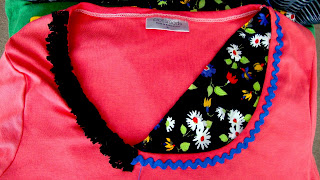Several years ago in the midst of a fractious, deeply unhappy love affair I took a trip to
Saputara. It was ostensibly an effort to recapture some of the initial spark of the affair though truth be told it was clear it was not going to happen. Still, P and I packed for the week and my trusted Maruti 800 was put into service with the two of us alternating the driving.
Driving clears one’s head. So does any movement, we think often of getting into a bus to no particular destination. Already leaving Mumbai, the air felt a bit clearer in more ways than one. We stopped for fresh fish and sweet tea at a shack by a lake. Then on to Nasik where P had worked for awhile in a factory. We walked around a bit, the lanes were flanked by fields, the moon shone down. We took a tour of the factory, oddly enough the cool gleam of the machines on a night shift was the beginning of some peace between us.
The Mumbai-Nasik road is a thoroughfare. There are trucks, cars, small towns, people on the move, the flow of commerce. Pulling away from Nasik things change. The roads are not as busy, the countryside full of vineyards. The rainy season had just ended leaving everything verdant. One could sleep on an arm resting on the window, feel the sun on one’s face. We expected Saputara to be some distance after we passed Gujarat but suddenly it was upon us. A hill station of sorts, this was the off season and the hotels lay empty. Most were ordinary and built for a predominantly Gujarati clientele, the staff a motley lot who had hotel degrees from small towns. We initially checked into one of these till P, ever intrepid, found a picturesque State tourist cottage on a cliff. On this we agreed, its rusticity, its lack of conveniences.

Time passed slowly, amicably. The usual help ferried up the toast-tea-oily omelet breakfasts of government circuit houses. We walked around the quiet town, ate at the few hotels. One night we heard singing from a village down below the cliff side. Ahead of Saputara stretched the
Dangs, the songs were tribal. The next day we took the car into the forests. Forests in a manner of speaking, for there was a road, small vehicles, tiny hamlets. Still, the roads passed trees filled with sunlight, rivers in which women and children swam, all around a different world to the one we had left. We drove up to
Ahwa, which for a district headquarters was fairly pitiful, largely because the Dangs was tribal, neglected, poor. At the midday hour when we arrived, the streets were full of children in uniforms. The
politics of the Dangs was evident in Ahwa, not long back the district had been embroiled in clashes. It wasn’t just the clashes. We had stopped by a river only to step on broken beer bottles. And not far from where we stopped, a few men, possibly small time businessmen from elsewhere, had set up an alcohol party. Their spot commanded a view of the river, no doubt to better spot the near naked tribal women who swam there. In the town, we went to see an Ayurvedic centre where medicines were being packed. The man in charge had come from up north; he took it upon himself to explain the “loose morals” of the locals. It appeared alcohol flowed freely, women frequently left their partners. To us he had every appearance of having a mistress of his own.
So we wandered, mellowed and more friendly than we had been in the past months. At a botanical garden with neat hand painted signs identifying species, the trees loomed over us. A sign informed us of a village with an inhabitant who had been to the Festival of India, we went in and bought a few pieces made of the local bamboo. The man patiently fixed the horns of the deer while we sat and watched. The deer seemed alive, their grace somehow captured in that piece of wood. The village was neat, small houses, small lots with greens. Then the drive back in darkness, the faint snatches of song from the valley. Then the hilltop cottage, alone and mysterious in the night light.
Some days later we drove back. Driving to the Dangs, we had imperceptibly slipped into a different way of life. Returning felt different. By the time we hit Mumbai and stopped at a local café to eat, the shock of immersion in what was our life was disorienting. I went home to meet my uncle who had taken ill, P flew back to tackle his own demons. By the end of the year, my life felt unravelled and it would take more than a few months and a move to another continent to put it all back together again. It was not a happy time, it was not a time of reason or calm, it was not an admirable time.
For a long time I used to think of the Dangs. Not as a brief romantic interlude though it was that. I am drawn to forests and hills, to mists and cold, to houses on cliffs. To deer, to the whirling of birds in skies. The closed nature of hill people, the grubby faces of their children. To rivers, to women who freely revel in its waters. I used to close my eyes and think for the longest time of how little all this was present in my life.





































